#muzzleloader
Explore tagged Tumblr posts
Text
New knife sheath in progress. Porcupine quills on elk.
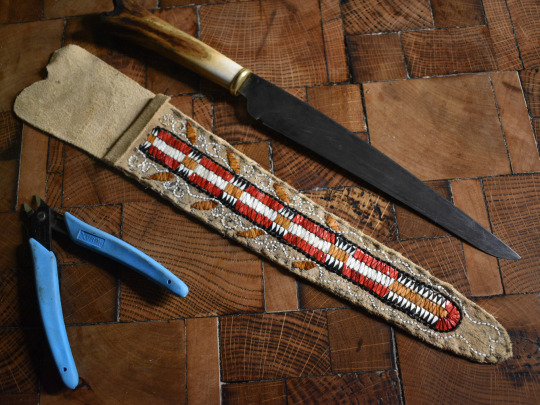
7 notes
·
View notes
Text
More realistic guns for D&D 5E
Some ideas for more realistic guns, with rules that explain why armies would want them and adventurers might not
*Muzzle-Loading: 1 Turn to load powder, 1 Turn to load ball, 1 Turn to prime pan, 1 Turn to shoot. All of this must be done using your action and without moving unless you’re on a horse or vehicle, because you can’t pour powder and ram the ball while running.
Handgonne 14lbs, Simple Ranged Weapon Damage: 1d12 Piercing Properties: Two-handed, Heavy, Ammunition, Range 30/120, Muzzle-Loading*
Matchlocks
Arquebus - 10lbs, Simple Ranged Weapon, Heavy, Ammunition, Muzzle-Loading, Two-Handed, Range 150/600, Damage 2d8 Piercing
Pistol - 3lbs, Simple Ranged Weapon, Light, Ammunition, Muzzle-Loading, Range 30/90, Damage 1d10 Piercing
Heavy Gun - 30lbs, Simple Ranged Weapon, Heavy, Ammunition, Muzzle-Loading, Two-Handed, Range 30/60, Damage 6d4 Piercing (or can fire explosives)
Flintlocks
Palm Pistol, 25gp 1lb, Simple Ranged Weapon, Light, Ammunition, Muzzle-Loading, Range 20/60, Damage 1d8 Piercing
Pistol, 30gp 3lbs, Simple Ranged Weapon, Light, Ammunition, Muzzle-Loading, Range 30/90, Damage 1d12 Piercing
Blunderbuss, 40gp 7lbs, Simple Ranged Weapon, Ammunition, Muzzle-Loading, Two-Handed, Range 30/60, Damage 6d4 Piercing
Musket, 55gp 10lbs, Simple Ranged Weapon, Heavy, Ammunition, Muzzle-Loading, Two-Handed, Range 450/900, +1 to Hit, Damage 1d20 Piercing
Rifled Musket, 500gp 14lbs, Martial Ranged Weapon, Heavy, Ammunition, Loading, Two-Handed, Range 900/1500, +2 to Hit, Damage 2d10 Piercing
Hand Mortar, 40gp 5lbs, Simple Ranged Weapon, Ammunition, Muzzle-Loading, Two-Handed, Range 30/60, Damage 2d6 Piercing + 2d6 Fire
More damage and a longer reload makes guns distinct from bows and crossbows, encourages a playstyle consistent with historical use (shoot what you have loaded, then charge with melee weapons), and explains why conscripted armies might use ranks of Pike and Shot or bayonets yet adventurers already skilled with bows and such wouldn't bother with the expense and complexity.
Here is my source for ranges of smoothbore and rifled muskets: https://scholarworks.iu.edu/journals/index.php/iusburj/article/view/19841/25918
6 notes
·
View notes
Text

Long time no see
550 notes
·
View notes
Text
brilliant
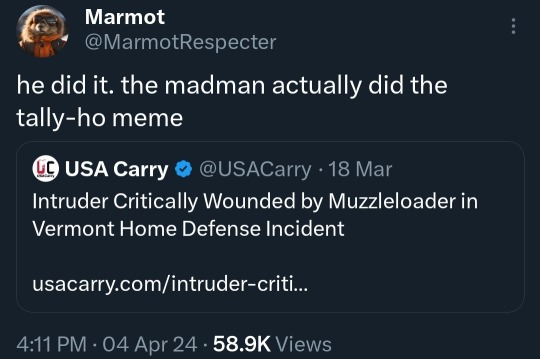
689 notes
·
View notes
Text

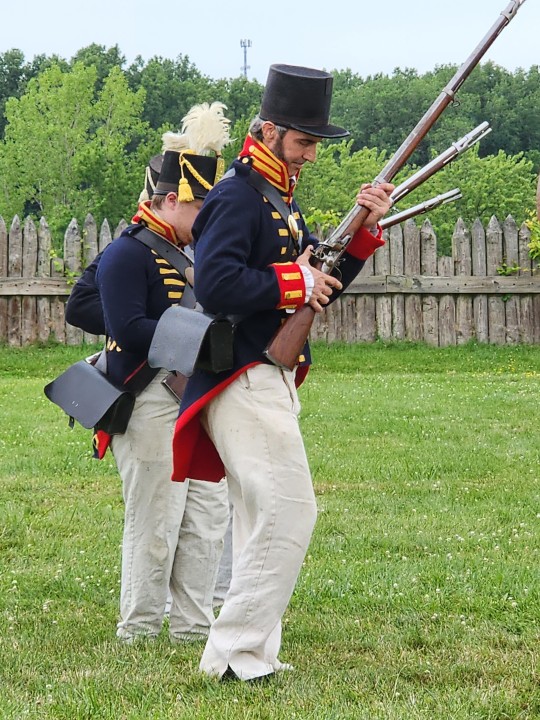



The 4th of July at Fort Meigs, Ohio, featuring the Old Northwest Military History Association.
Jokingly, they mentioned that they didn’t do the 13-gun salute at dawn in consideration of the neighbors, but the other toasts and music of the 1813 Independence Day celebration at Fort Meigs were reenacted with an 18-gun salute.
At top, the musket shooting competition where participants try to fire three shots (powder only, no bullet) as fast as possible. The goal is three shots within a minute, but few achieve this.
#fort meigs#war of 1812#military history#4th of july#us history#us army#napoleonic#living history#historical reenactors#historical reenactment#flintlock#firearms#1810s#dressed to kill#i want to see this done with real ammo#i have to start going to muzzleloader events and primitive rendezvous
39 notes
·
View notes
Text

it’s fun to find antique stores that still have guns
14 notes
·
View notes
Note
recently i've been learning the difference between shota/loli and normal underage. hpw do you rate 1-10
I <3 SHOTALOLI AND IT CAN BE PRIED FROM MY COLD DEAD HANDS 1000/10. also a fan of underage and playing on them being prey. good shit. i like being the prey mostly
2 notes
·
View notes
Text
I love randomly shooting injust don't have loud enough guns
2 notes
·
View notes
Link
The article "How I Homebuilt a Howitzer" by Will Dabbs, MD, from The Armory Life, describes the author's experience of building a homemade howitzer as part of a homeschooling project with his children. Emphasizing the benefits of homeschooling, Dabbs details the construction process, including sourcing a cannon barrel, creating a carriage with readily available materials, and crafting a firing system. The project offers educational experiences, promoting hands-on learning while adhering to legal regulations. Dabbs underscores the importance of family time, highlighting the project's value beyond its technical and educational accomplishments. The cannon, which is traditional in design, is also an attention-drawing centerpiece at events, encouraging interactions and connections with others.
#cannons#artillery#black powder#muzzleloading#gunpowder#military history#firing mechanisms#barrel construction#historic weaponry#cannonball#ignition systems#safety precautions#casting metal#historic reenactments#projectile dynamics#loading procedures#home-built cannons#DIY cannon construction#historical accuracy#metalworking#bore diameter#cannon carriages#shot trajectories#fuses#civilian hobbyists
1 note
·
View note
Text
Custom Flintlock Muzzleloader Kit – Build Your Own Traditional Firearm | Sitting Fox Custom Muzzleloaders
At Sitting Fox Custom Muzzleloaders, we specialize in providing high-quality Flintlock muzzleloader kits designed for history enthusiasts, hunters, and traditional firearms collectors. Our kits allow you to create your own custom flintlock rifle or pistol, using authentic materials and historically accurate designs from the 18th and 19th centuries. Whether you're a seasoned builder or starting your first project, each flintlock muzzleloader kit comes with carefully selected components, including the stock, lock, barrel, and hardware needed for assembly. We offer a wide variety of styles, from long rifles to pistols, inspired by different time periods and regions. You can choose the level of finish—whether fully in-the-white or pre-inlet—to suit your skills and preferences. Our kits are perfect for historical reenactments, black powder hunting, or simply as a rewarding DIY challenge. Backed by years of craftsmanship and a passion for traditional firearms, Sitting Fox Custom Muzzleloaders helps keep history alive, one build at a time. Explore our collection today to find the Flintlock muzzleloader kit that fits your vision and enjoy the satisfaction of building a firearm rooted in American heritage and tradition. Start your journey into traditional gunsmithing with Sitting Fox.
0 notes
Text
is your dick a breechloader or muzzleloader
66 notes
·
View notes
Text
To waste a bullet on Europa is horrid — when a 5-year transit is considered fast, just about every form of supply is minimal. Arms and ammo. Food and water. Hopes and dreams.
To save costs and ensure soldiers make their bullets count, firearms on Europa are extremely primitive. Standard-issue rifles are muzzleloaders. Basic repeaters (ie bolt-action or pump-action) are available to specialists. Even a semi-auto is considered elite equipment.
That's not to say the soldiers fight with primitive, human-wave tactics — on average there's only about 75,000 people across Europa's entire surface. Their lives may not be valued, but the logistics of replacing them are.
23 notes
·
View notes
Text


the RCM being limited to using exclusively muzzleloaders (or exclusively non-jacketed ammunition, uncertain) as service pistols is one of my favorite bits of world building from disco elysium, and i love how, visually, harry’s pepper box pistol makes no sense whatsoever. Why does the 9mm bullet obviously have a shell casing if it’s a muzzleloader, why does it have a rim, why is it copper colored if it’s supposed to have an unjacketed. Kim has to tamp down the ammunition for his (much simpler) pistol with a ramrod, which makes sense, but if we’re to take the visual representation of the 9mm at face value it implies Harry’s Villiers is a breach loading firearm. However this goes contrary to most of the dialogue as breach-loading weapons of all make are suggested to be highly rare, exclusive, and beyond the reach of the average RCM officer. In the case of any muzzle loader, Kim’s, Harry’s, or Ruby’s, if they are as they’re described they’d also need a method of ignition, like a percussion cap, but this is never mentioned or shown. Ultimately none of this matters whatsoever and I think the way Disco Elysium handles firearms is really cool, but if they wanted to make my pedant’s heart flutter just a little bit more the cartridges would look like this
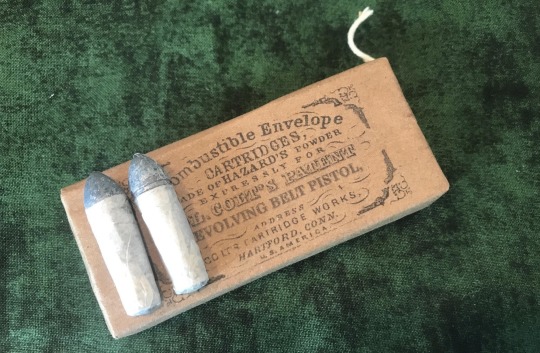
295 notes
·
View notes
Text
The only thing that's going to be taken is the serial number



Unserialized muzzleloader go brrrrrrr
#2nd amendment#ghost guns#gun meme#fuck gun control#gun control#brian thompson#United healthcare#shall not be infringed
20 notes
·
View notes
Text


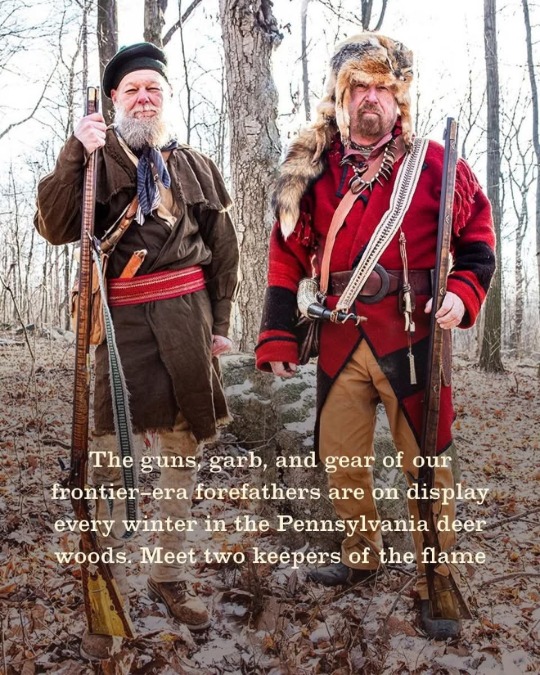
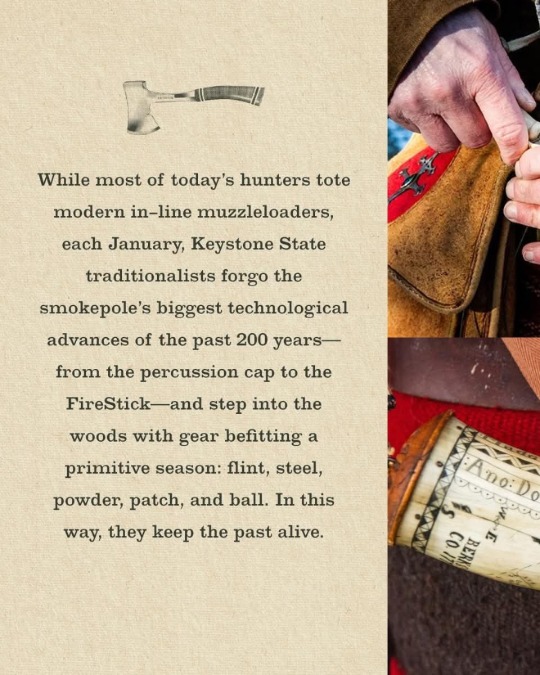
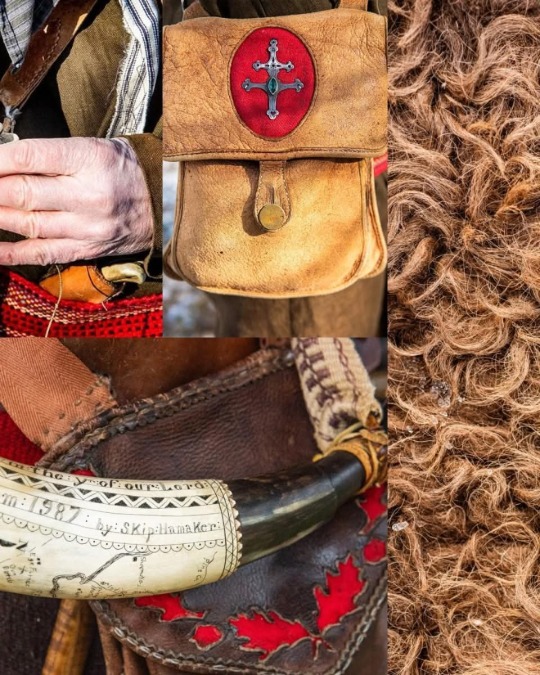
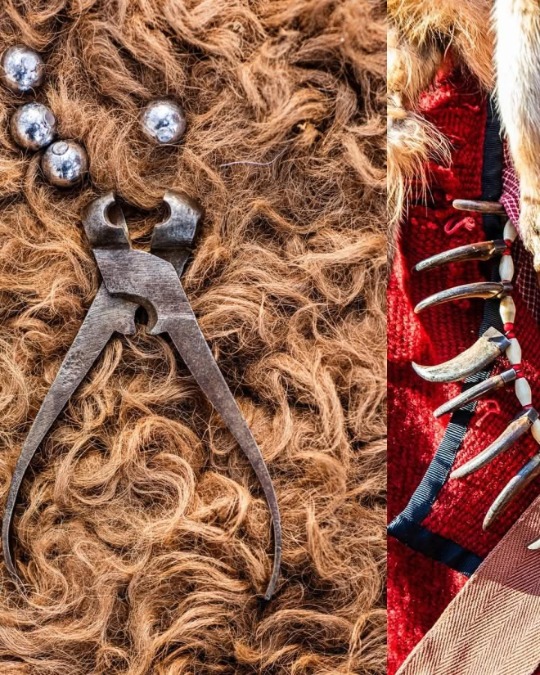




I tend to think sport hunting is barbaric, but give these guys a pass because that 18th C. drip is strong, plus flintlocks are fun.
Photos from Field and Stream:
" Pennsylvania’s flintlock-only deer season, begun in 1973, is the last of its kind in America.
While most of today’s hunters tote modern in-line muzzleloaders, each January, Keystone State traditionalists forgo the smokepole’s biggest technological advances of the past 200 years—from the percussion cap to the FireStick—and step into the woods with gear befitting a primitive season: flint, steel, powder, patch, and ball. In this way, they keep the past alive.
Read the full story - https://www.fieldandstream.com/hunting/photo-gallery-pennsylvania-flintlock-only-deer-season
"
9 notes
·
View notes
Text
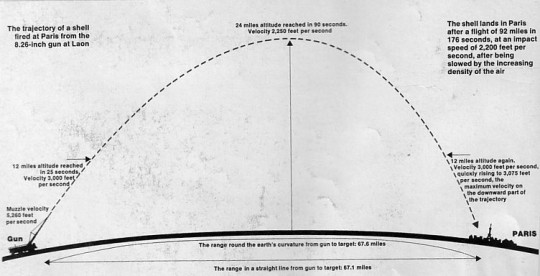
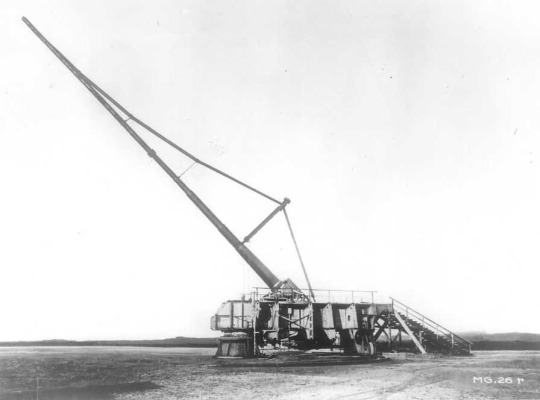
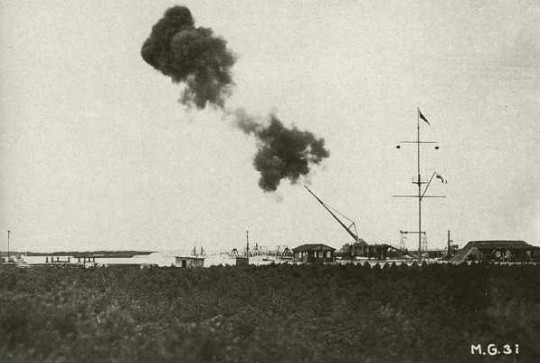
The Paris Gun
The Krupp arms-making dynasty was founded in Essen upon the fortune amassed by Arndt Krupp, who settled in that city in 1587. His son Anton expanded the family’s endeavors into making firearms during the Thirty Years’ War of 1618-1648, and the family progressively expanded its operations over the ensuing decades. In 1811, Friedrich Krupp (1787-1826) established a steel casting facility, and, although he successfully began casting steel in 1816, he expended considerable funds in the process. His son, Alfried (1812- 1887), continued his father’s work and eventually re-established the family fortune. By its nature steel was very difficult to cast, and internal faults were often impossible to detect through existing testing procedures. Defective cast steel pieces were also much more dangerous to crews than iron cannons, as the softer iron tended to split or burst with less energy than the harder steel, which more often ruptured with deadly violence. The Krupp firm’s success in casting steel was considered one of the major metallurgical achievements of its day.
Beginning in 1844, Alfried Krupp began experimenting in machining guns from solid cast steel blanks and in 1847 produced his first steel cannon. That same year he presented a steel gun to the King of Prussia, Frederick Wilhelm IV (1795-1861)-an act of entrepreneurial generosity that later won an order for 300 field guns. He went on to display a 6-pounder muzzleloading gun at the Great Exhibition of 1851 and began experiments in developing breechloading weapons. In 1856, Krupp introduced a 90mm field gun fitted with a transverse sliding breechblock that fit through a corresponding slot in the rear of the barrel.
Germany subsequently made the transition to rifled breechloaders during the 1860s, a move that gave it a distinct artillery advantage during the 1870-1871 Franco-Prussian War. Shortly after the war it adopted 78.5mm guns for its horse artillery and 88mm pieces for field use. The logistical difficulties associated with supplying two sizes of ammunition in the field and recent advances in metallurgy and gun design then led to the Model 73/88 system, which used the 88mm caliber for both horse artillery and field use and the later Model 73/91 system, utilizing nickel steel barrels. The Model 73/91 was finally superseded by Germany’s answer to the French 75-the Model 96 or Feldkanone 96 neur Art.
The development of specialized antiaircraft artillery also intensified during the war. The first documented use of antiaircraft artillery occurred as early as the siege of Paris during the Franco-Prussian War in 1870. At Paris, the Prussian commander von Moltke ordered weapons from Krupp in order to shoot down balloons in which the French were trying to sail over the Prussian lines. Krupp eventually delivered a number of single-shot, caliber 1-inch rifles that were mounted on pedestals bolted to the beds of two-horse wagons; they theoretically could follow the balloons on the ground while maintaining a steady firing rate. The Krupp pieces were relatively ineffective, yet at least one French balloon was apparently downed by their fire.
The rapid proliferation of powered military aircraft at the turn of the century, however, spurred an equally dedicated effort to neutralize the threat of air attacks. During the 1909 Frankfurt International Exhibition, Krupp unveiled three antiaircraft guns in a bid to monopolize the emerging market. These included a caliber 65mm 9-pounder and a 75mm 12-pounder. Krupp claimed that the largest, a pedestal-mounted 105mm gun intended for shipboard use, achieved a maximum ceiling of 37,730 feet. The caliber 65mm gun had an 18,700-foot range, could elevate 75 degrees, and its carriage had unique hinged axles that allowed the wheels to be pivoted to a position perpendicular to their traveling position. With the trail spade acting as its axis, this arrangement enabled the crew to traverse the piece 360 degrees to track enemy aircraft. With a claimed maximum ceiling of 21,326 feet, the caliber 75mm gun was mounted on a truck bed, thus giving it a high degree of mobility. Not to be outdone, Erhardt, Krupp’s closest domestic competitor, also exhibited a 50mm quick-firing antiaircraft gun mounted in an armored car’s turret.
The period also witnessed considerable experimentation in antiaircraft shells and fuses. Krupp introduced a high-explosive shell for its 3-pounder equipped with a “smoke-trail” fuse, an early tracer round that both aided the crews in sighting and was an effective incendiary against the hydrogen-filled airships of the period.
During World War I the Germans continued to experiment in antiaircraft weaponry, beginning in 1914 with the 77mm Ballonen-AK. The Ballonen-AK was then, in turn, followed in 1915 by the 77mm Luftkanone, a basic 77mm field cannon barrel mounted on a rotating scaffolding. The more effective Krupp 88mm FlaK entered service in 1918 and eventually became the inspiration for the famous World War II German “Eighty-Eight.”
Popularly named after Alfred Krupp’s daughter, the 41.3-ton, 420mm “Big Bertha” had a horizontal sliding block and fired a 1,719-pound shell up to 10,253 yards. Big Bertha required five tractors to transport its components, and it had to be assembled on site. In conjunction with a number of Austrian Skoda 305mm howitzers, the L/14 was first used with devastating effect against Liege in August 1914; it saw other action on both the Western and Eastern fronts. Owing to its relatively short range and vulnerability to Allied fire, Big Bertha was obsolete by 1917. Another heavy piece, the 211mm Mörser was adopted in 1916. It weighed 14,727 pounds and fired a 250-pound shell up to 12,139 yards.
Designed by Krupp engineers and adopted in 1918, the Paris Gun used the basic 380mm Max railroad gun barrel fitted with a barrel liner and lengthened 20 feet. The 210mm Paris Gun weighed 1,653,470 pounds and mounted a 2,550-inch barrel with a horizontal sliding block. It fired a 264-pound shell up to 82 miles. Crewed by naval personnel, the Paris Gun was so powerful that it fired its shells into the stratosphere, where the thinner atmosphere exerted less resistance, allowing such long ranges. The stress on the bore, however, wore the barrel significantly, and each succeeding projectile had to have progressively larger driving bands and heavier powder charges to compensate for the increasing windage. Although hugely inefficient in the final analysis, the Paris Gun’s greatest value lay in its use as a propaganda tool rather than an artillery piece. Source
27 notes
·
View notes